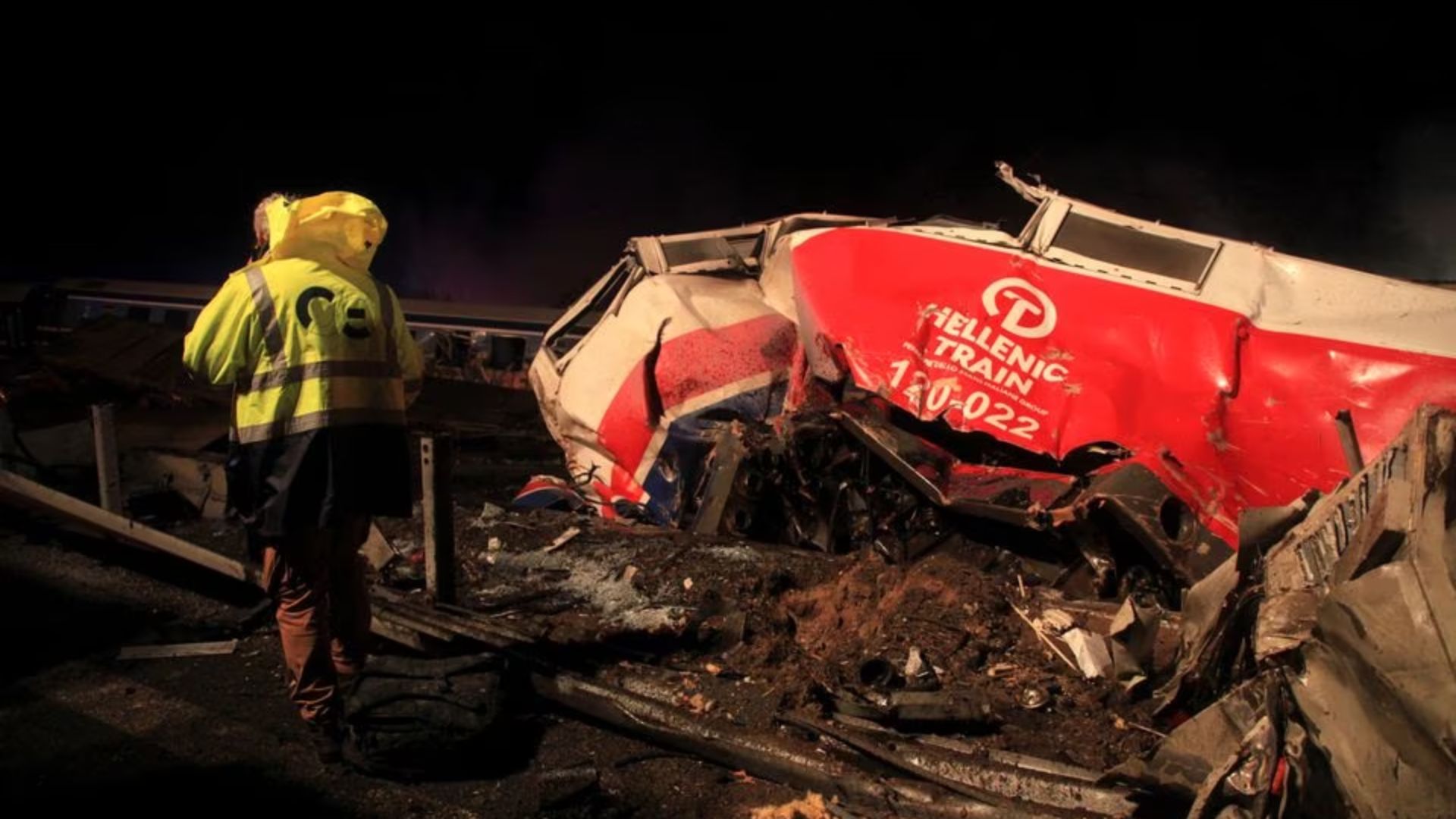ATHENS -A collision between two trains on Tuesday night in Greece caused 32 fatalities and 85 injured, according to the fire brigade. The incident involved an intercity passenger train travelling from Athens to Thessaloniki, and a cargo train, colliding at high speed near the central Greek city of Larissa. Despite investigations being carried out, the reason behind this catastrophic accident - which is the most fatal rail incident the country has faced in many years - is yet to be determined.
Thessaly region governor reported a high-speed collision between an intercity passenger train from Athens to the northern city of Thessaloniki and a cargo train outside the central Greek city of Larissa.
Many commuters were burned and taken to hospitals after the impact caused a fire in several of the passenger carriages. A passenger who jumped to safety from the wreckage, Stergios Minenis, 28, said, "We heard a big bang, (it was) 10 nightmare seconds."
We were rolling over in the wagon until we fell on our sides, at which point there was panic, cables were immediately on fire, the fire spread quickly, and as we turned over, we were being burned.
The first four passenger train carriages were derailed in the collision, and the first two carriages that caught fire were "almost completely destroyed," according to Thessaly regional governor Konstantinos Agorastos, who spoke to SKAI TV.
On the same track, he claimed, the two trains were barreling toward one another. The governor claimed, "They were moving very quickly and one (driver) didn't know the other was coming."
Buses carrying about 250 people were used to transport them safely to Thessaloniki. One traveller claimed that by smashing the train window with his suitcase, he was able to escape, according to state broadcaster ERT.
A young man who was taken to a nearby bridge during an evacuation told SKAI TV that "there was panic in the carriage, people were screaming." Another passenger, Angelos Tsiamouras, told ERT that it "felt like an earthquake."
Broadcaster SKAI showed footage of derailed carriages, badly damaged with broken windows and thick plumes of smoke, as well as debris was strewn across the road. Rescue workers were seen carrying torches in carriages looking for trapped passengers.

"The evacuation of passengers is under way in very difficult conditions given the severity of the collision of the two trains," fire brigade spokesperson Vassilis Varthakogiannis said in a televised address.
Rescue workers with headlights searched the wreckage and surrounding fields for survivors in the early hours of Wednesday, according to footage from state broadcaster ERT.
"We are witnessing a tragedy. We are rescuing people who are alive, injured, and dead. We are going to be here all night, until we finish, until we find the last person, "According to ERT, a volunteer rescue worker.
According to local media, approximately 350 people boarded the passenger train, which left Athens around 7.30 p.m. (0530 GMT). The fire department stated that it was notified of the accident shortly before midnight on Tuesday. The cargo train had been travelling from Thessaloniki to Larissa.
When two trains collided head on outside Larissa in 1972, 19 people were killed.
Many trains in Greece travel on single tracks, and signaling and automatic control systems are still being installed in many areas of the country's aging railway system.
As part of its international bailout program, Greece sold railway operator TRAINOSE to Italy's Ferrovie dello Stato Italiane in 2017, with hundreds of millions of euros expected to be invested in rail infrastructure in the coming years.
According to the website of the Italian company, it is the main provider of rail transport for passengers and freight in Greece, operating 342 passenger and commercial routes per day.